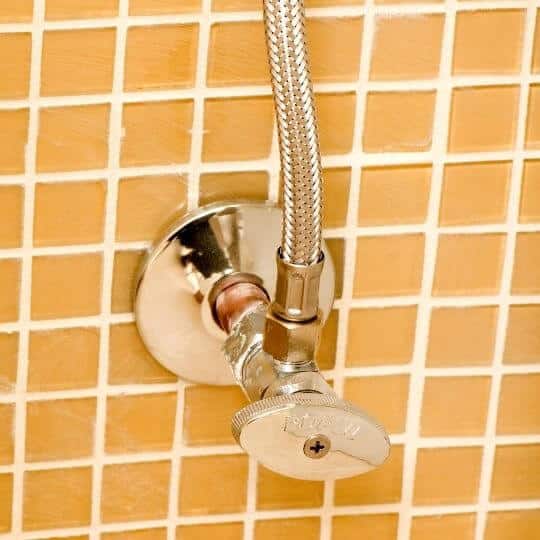Bathroom leaks are the cause of many issues in the household. Having a leak under bathroom floor is especially dangerous, as it can go unnoticed for days.
Most people don’t even realize something is wrong until they step into a puddle after taking a bath. Finding a source of this issue can be a real hassle, but it’s detrimental to ensuring you fix the plumbing. Here’s how you can locate the leak under bathroom floor and what can you do to fix it.
Why Are Leaks Dangerous

Having a leak under bathroom floor is very dangerous and you shouldn’t let it be. The first reason why standing water is hazardous is that it can cause a short circuit. Just think about all those electrical devices and all the wires that connect them. If there is enough liquid, it can cause a power shortage.
Not to mention it can electrocute you if you touch just a drop of electrified water! If you suspect the water from the leak is in contact with any power source, contact a licensed electrician. This is the only way you can be certain the power has been cut off from your property.
Not just that, but standing water can cause many health issues. If you leave it be, it can cause the growth of mold and mildew. Other than that, it can also cause water damage.[1]
This includes damages to the drywall, and it can even cause warping on the wood. If you leave it for too long, it can even ruin your flooring.
No matter if you have tiles, wood, or even carpet, it will get damaged. When it comes to tiles, the water can even eat away the glue that’s holding them together! And the water can create a black residue on woods if it gets deep enough.
Getting rid of mold and mildew can be quite a challenge. Sometimes, there is nothing left to do but to replace the flooring altogether. This is why it’s essential to fix everything as soon as possible.
Not to mention the dangers it can cause if the bathroom is located on the second floor! This can compromise the sheetrock below and it can even cause the floor to collapse. Once it gets that bad, there is nothing else to do but to contact a professional for help. This is especially important if you live in a multi-level building. Remember that the faster you act, the more you are salvaging.
How Can You Know You Have a Bathroom Leak

There are a few signs that you might have a leak inside your bathroom. While some leaks are obvious, leaks under the bathroom floor can be difficult to notice.
This is what makes them exceptionally dangerous. Days or even weeks could go by without you knowing there is a leak somewhere!
To make things a tad bit easier for you, here is what you need to look for.
Puddles
This one is obvious. If there is a huge puddle of water on your bathroom floor, something is terribly wrong. While you can have a bathroom floor wet after shower, puddles are a different story.
They appear even if you haven’t used the bathroom for a long while. A common location for them is around the shower base or in the bathroom cabinets.
Damp patches are similar. They can be harder to spot, but they aren’t invisible. If you notice them on the floor, this means you have a leak.
Mold
Mold is a common bathroom issue. It loves humid conditions, and the bathroom is like a damp paradise for it. If you don’t usually have an issue with mold, but now it suddenly appeared, this can be a bad sign. Mold and mildew can notice stagnant water before you do.
Issues with tiles
If your floor has tiles, take a careful look at them. If they are loose or broken, this means that something is wrong. Damaged caulking is another bad sign. All of these serve as an easy entry for the water that comes from underneath the floor.
Strange noises and smells
Pipes can be noisy when they are broken. If you hear any unusual water sounds, this can be a sign of a big leak. Hissing noise can also be a sign of a slight crack.
Other common noticeable signs are strange smells. These are the results of mold and mildew gathering in places you can’t see. Commonly, they are found underneath the flooring.
Many homeowners don’t realize what these new odors are before it’s too late. They’ll buy air fresheners or leave windows open instead of addressing the issue.
How to Locate the Leak under Bathroom Floor

If you notice your bathroom floor soaking wet, it’s time for investigation! Before anything else can be done, you need to locate the leak. Only then you can start thinking about fixing it.
Just to make sure, check the ceiling so you can be certain the water isn’t leaking from above. You can notice a ceiling leak if there are any water stains or even water drops. Make sure you’ve checked the entire ceiling. The water doesn’t need to come from right above the puddle. If you indeed have a leak under bathroom floor, this is where the journey begins.
The first step should be to check your plumbing, to ensure there are no visible leakage signs. Look under your sinks, in the bath or shower tub, and around your toilet. If you don’t notice any water, there are other ways to know if you have a leaking pipe. They project a very strange hollow sound, similar to hissing.
TIP: Buying water leak detector is always a good idea!
If you can detect this noise, it can lead you to the source of the water. If your kitchen is near the bathroom, look at it, as well. The places you should look at very carefully include:
- toilet
- sink
- bathtub or shower
- kitchen sink
- drain
- ceiling pipes
One of the common culprits behind the leak under bathroom floor is wrongly installed toilet.

If the measurements between the wall and toilet aren’t taken precisely during the installation, this can be the cause of leaking. It’s always important to have professionals installing your bathroom. Otherwise, leaks will be a common occurrence.
Take notice of how much water is there on the floor. The more water there is, the more urgently you need to find the source. Look for any bulges on the floor. They indicate that the source of the leak is right underneath them.
Environmental Protection Agency also suggests checking the water meter. To begin with this method, turn off all the water sources in your house. This will ensure not a single drop of water is running through your pipes.
Check the water meter. Wait for a couple of hours, then check it out again. If the meter is staying at the same level, the leak can simply be a result of spilling something. Not all puddles mean the water is coming from underneath.
However, if the meter tells you you’ve used water, this means there is a leak somewhere. Most likely – the leak is coming from underneath your floor.
If the water is leaking under the floor on the second story bathroom, go downstairs, into the room underneath. Look at the ceiling and try finding any signs of a leak. As we’ve already mentioned, these signs include:
- Water stains
- Ruined ceiling
- Drops of water
If you happen to see any of them, the leak is typically right above. However, there is no rule to this, as water can travel far before it finds the weakest spot and leaks. Still, at least you’ll have some clue as to where the location can be.
If nothing else can be done, you need to take apart either the flooring or ceiling of the room below. Tearing the floor apart can be costly, especially if you have tiles. This is why combating the issue from underneath is a method we commonly suggest. However, if there is no way you can search from below, your options are limited. In fact, the only thing left is to take up part of the floor – or even the entirety of it.
Once you’ve found the location from where the water is leaking, you should find a way to stop it. Keep on reading to find out what you can do.
How to Stop the Leak

Leaks under bathroom floor can be rather tricky to fix. The first step should definitely be to shut off the home’s water source.
If you’ve discovered that there is a single pipe leaking, turn of the water to that specific pipe. This way, you’ve stopped any more water from leaking up onto the floor. If you’re lucky, this might also cause some water to drain off.
Sadly, broken pipes are nothing to joke with, and you should contact a professional for help. While there are some temporary solutions to fix the pipes, these aren’t forever. You can cause a bigger issue if you leave the problem without dealing with the cause. As we’ve mentioned already, water can cause huge problems for your property. It might even damage your house’s structure. Contacting a reliable plumber is the only long-lasting solution.
If the water meter proved the water was coming from the outside source, you need a different tactic.
There is no use in shutting off the water source, as pipes aren’t the issue. If you’re on the first floor, common sources of these issues are:
- A crack in the home’s exterior
- Badly sealed foundations
- Cracks or holes in the foundation floor
Any of these issues cause the outside water to leak under bathroom floor. If there is a hole, you can use a plug to temporarily close it, then contact a professional to fix it.
You might also try sealing the cracks with cement, but there is no guarantee this will be a lasting solution. Badly sealed foundations require help from a local handyman or a construction expert. If cracked tiles are what’s causing the issue, you can try installing bathroom floor fitters.
Just make sure you’ve sealed any cracks underneath it! Otherwise, you’d only be masking a more serious issue.
Of course, the cause might be something much simpler. Maybe a member of your household doesn’t know how to keep bathroom dry after shower. If the water appears only after you’ve used the bathroom, this might be the issue.
Bottom Line
Having a leak under bathroom floor is one of the more dangerous things that can happen in the long run. They are difficult to notice, so you might not see them before it’s too late. If you have a leak in other areas such as the living room, you might need to replace soundproof layers under floor.
Water can cause severe damage to your home, especially when left unattended for a while. In some cases bathroom renovation is necessary.
Sometimes, the cause of the leak can be something fairly benign, such as badly installed tiles.
Other times, this might indicate a piping issue. Sadly, unless you are a plumber, you can’t properly deal with pipes on your own. Contact a local professional as soon as possible to prevent the further hazard.

Michael Davis is a heating & plumbing expert who currently works as independent contractor in SC. He also writes for Plumbertip.
For almost 10 years he worked on various plumbing tasks across South Carolina.


